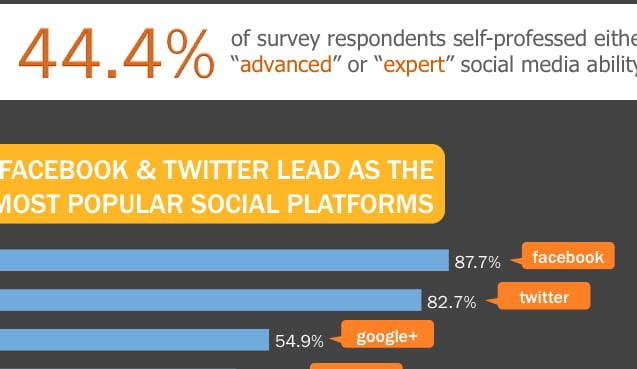Alfredo Lopez explains why all businesses are now media companies and how to effectively use that advice to drive your online social engagement strategy.
“All Businesses Are Now Media Companies”
Alfredo Lopez – Cofounder Social Chrome
Today’s generation of youngsters , the twenty and thirty-somethings (and all future generations for that matter), are hard-wired to seek out online content before doing business with anyone. Indeed, according to Marketing Land, 91% of people have visited a store after an online experience.
Promotions and discounts are no longer enough to drive new business. Think about it, do you ever see flyers any more ? What about that ancient book of golden scrolls we used to call the Yellow Pages? Exactly.
Business paradigms have shifted to include more parity and transparency for the consumer. Customers want to be engaged by your business. They want to experience your personality, and they want to see what other people are saying about you. In short, they want to be fascinated, not finagled. Fascination is magnetic, and is a key to attracting new business.
So, how exactly how do you attract new business with social media? Scratch your head no more, here are three proven techniques to do just that!
1: Transparency
Transparency results in trust and a deep sense of security towards your business which should be the main goals of any social media strategy. In today’s business world, transparency is absolutely vital. You simply cannot do without it.
Not too long ago, business folk, salespeople, and marketers had a big advantage: more often than not, they had more information than consumers. If you walked into a car dealership, the salesman knew more than you. If you went to the doctor, he or she knew more than you too. This eventually led to consumer mistrust.
With the advent of the internet, and sundry other modern communication tools and devices, there is now a surplus of information. This means that consumers often have as much, if not more, information than the salesperson. Transparency breaks down barriers because you are effectively letting people learn more about you, the way you work, and how you service customer needs.
Another important motivation for transparency is what bestselling author Daniel Pink calls non-sales selling. Let’s be clear. Being transparent, and setting up the systems and operations with which to be transparent, is an action. Specifically, we can qualify this type of action as non-sales selling.
Pink estimates that we spend around 40% of our time engaged in non-sales selling: influencing, persuading, and convincing others in ways that have nothing to do with anyone buying anything. So what is the ROI of non-sales selling? Trust. And there’s simply no substitute for that as we move towards a more transparent future.
2: Micro-Content
One of the keys to social media is microcontent; the smaller the better. Think of microcontent as a bunch of snapshots you take with your camera, or as small conversations that you have with your neighbor. There are two critical components that make microcontent successful: quality and regularity. Let’s unpack these concepts.
Several ingredients go into producing quality content. First of all, your content must be personable. There’s no point in producing content and sounding like an answering machine. That approach is going to make people feel like they are sitting in line at the DMV (why would you do that).
Take a look at your current content strategy: do you sound human, or do you sound like a bot? It makes a big difference.
High quality content evokes a human response in the audience. When you pair that response with a call to action, then you are well on your way to building a relationship and adding value for the consumer.
That’s the real power of social media: creating connections!
Consider what Coca-Cola has done recently with their “Share a Coke” campaign. They have been printing people’s names on their classic Coca-Cola cans. An example might say, “Share a Coke with your BFF” or “Share a Coke with Family” or “Share a Coke with Susie.” See that there? The Coca-Cola can is already a classic, but they figured out a way to use the space on the can to produce a piece of personalized content alongside the branding.
The result? Sales catapulted to the highest they have been in a decade, and I’m pretty sure there are a lot of happy Susies out there.
Another thing to consider is relevance. Remember: your content should not necessarily be about you, it should be about your audience. How relevant is your content? Is it tailored to your particular audience? Much of the challenge in generating great content comes from identifying your audience’s personality and tailoring your message to their liking.
The first thing you should be doing is creating a buyer persona that outlines as much detail as possible about your target audience.
What do they eat? What music do they listen to? Are they creative? Rational? Educated? Affluent? Edgy? Conservative? Introverted? Extroverted?
After you have pinpointed your buyers personality, you can start playing matchmaker. That is, you can say, “Hey Mr. Audience Member, I’d like to introduce you to this content that is tailored specifically for you, wink wink.” Now you’re a matchmaker, and everyone loves the person who introduces them to cool stuff.
3: Fascination/Innovation
There are a lot things in the world that are not fascinating. Things like the post office, filing your taxes, washing your dishes multiple times a day, jury duty, getting a cramp on your calf while you’re running or just sitting on the couch. Your business, as its own media company, should not be on that list. Ever.
More and more, marketers are privy to the fact that we are in a post-information age. It used to be that information was scarce, and whoever had access to information had a distinct advantage. But that is no longer the case. Information is abundant, and available at the touch of a button.
So how do you stand out from the noise and guffaw when information is all too prominent? You have to be fascinating.
Businesses are adopting social media marketing at accelerated rates. In fairness, not everyone loves social media, but an astute business owner must at least concede that it is invaluable to the well being of his or her business. As we move into a future where all businesses are exercising some form of social saes strategy, the most successful businesses will not be those with the same old social media strategies, but those who utilize social media in such a way as to be evoke fascination.
According to bestselling author Sally Hogshead, there are 7 triggers that evoke fascination. These are:
- Power
- Trust
- Mystique
- Lust
- Prestige
- Vice
- Alarm
I call them the 7 friendly wins and they should be your new best friends. Each one of them is a key ingredient in the recipe for your social media cake. Realistically, employing all of them would be excessive, but it’s important to at least be familiar with all of them. Try to employ them strategically and contextually whenever possible. Your use of these concepts will make your business irresistible to consumers.
Ultimately, fascination is an instinct. In other words, we are not rationally drawn to fascination, we’re magnetically drawn to it for reasons that reason does not grasp. Nevertheless, this instinct serves as a catalyst for action and behavior, including the decision to buy.
It’s time to harness your most fascinating self. Now go fascinate.










Leave a Reply
Want to join the discussion?Feel free to contribute!